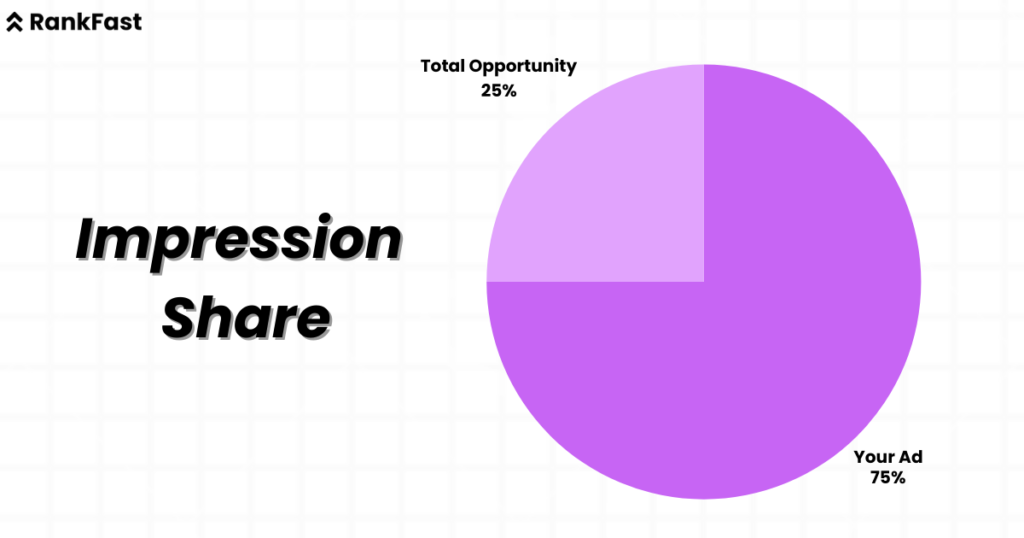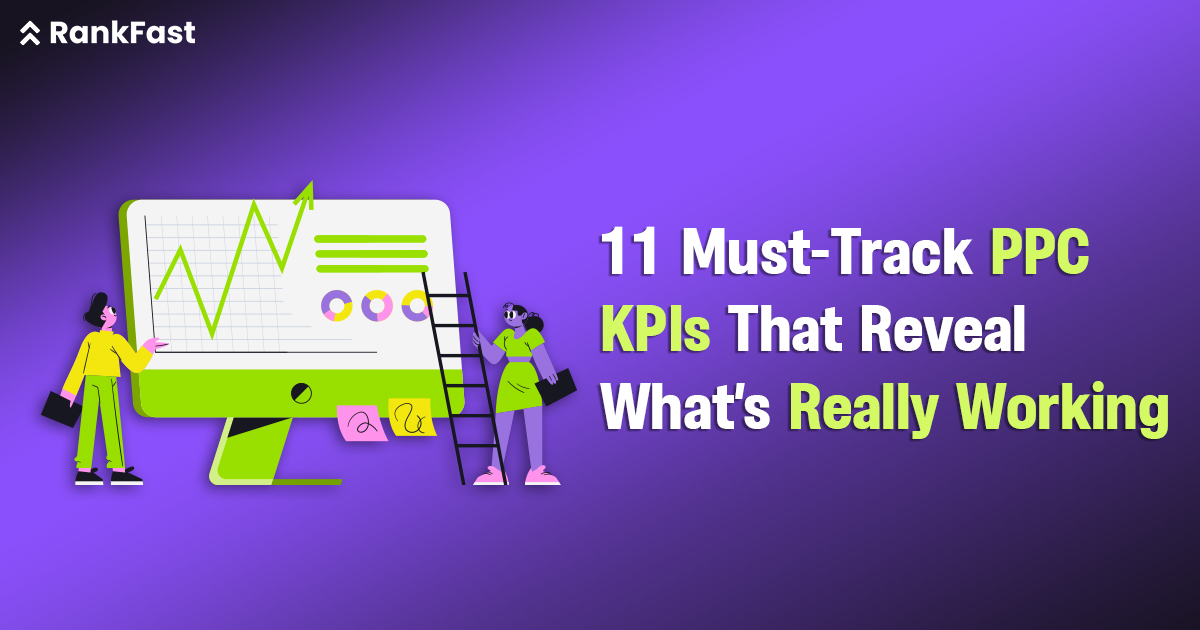Every PPC campaign lives and dies by its numbers. Yet, too many teams track vanity stats that don’t impact performance. You might notice high impressions, but if no one clicks or converts, those numbers lie. That’s why understanding what are PPC KPIs and using them the right way matters.
Here’s the reality: PPC ads increase brand awareness by an average of 80%. That’s a powerful figure, but only if you track the metrics that link awareness to action. Without structure, campaigns run on gut instinct. With the right KPIs for PPC campaigns, you can fix leaks, scale winners, and make smart decisions faster.
Every platform, Google Ads, Meta, and LinkedIn, has data. But not all data is useful. Some metrics help you report, others help you grow. The key is filtering noise from signals. In the next section, we break down 11 PPC KPIs that matter most, and why.
Essential PPC KPIs You Should Be Tracking
Below are the 11 essential PPC KPIs. Each one answers a different question. Together, they give you the full picture.
1. Click-Through Rate (CTR)
CTR shows how many people saw your ad and clicked. It’s the first test, does your copy and creative catch attention? If impressions are high but CTR is low, your message needs work. This makes CTR one of the most important KPIs for PPC.
How to track it:
CTR = (Total Clicks / Total Impressions) × 100
Why it matters:
- Low CTR means wasted budget
- It affects ad rank, especially in Google Ads
- A high CTR signals relevance
Use CTR to test headlines, visuals, and offers. Small changes often improve it fast. Split test regularly to find which copy converts best.
2. Conversion Rate (CVR)
You can’t grow if clicks don’t turn into action. CVR shows how well your landing page converts those visitors into leads or buyers. Among PPC campaign KPIs, CVR connects the ad and the funnel.
CVR formula:
CVR = (Conversions / Clicks) × 100
Improve it by:
- Matching ad promise with page content
- Reducing form fields
- Adding trust signals (logos, reviews)
A 5% CVR on a campaign is better than a 10% CTR that leads nowhere. Always optimize for outcomes, not attention.
3. Cost Per Click (CPC)
This tells you how much you pay for each click. While lower CPC is good, don’t focus only on cost. Some high-CPC keywords convert better. You must weigh CPC with revenue. Still, it’s a foundational PPC KPI.
How to use it:
- Lower it by improving ad relevance
- Track changes after bid or audience tweaks
- Balance CPC with ROAS
CPC alone doesn’t define success. But it affects budget planning and overall ROI.
4. Cost Per Conversion / Acquisition (CPA)
This shows what you actually paid to earn a customer or lead. Among all KPIs for PPC, this is the most practical for budgeting.
CPA formula:
CPA = Total Spend / Conversions
You want low CPA with high conversion quality. But too low? You may be targeting the wrong audience. Adjust bids, landing pages, and audience targeting to bring this down.
Tip: Never compare CPA across unrelated campaigns. Set CPA targets based on product price, lifetime value, and funnel type.
5. Quality Score
Only in Google Ads, but highly important. It impacts cost and visibility. Quality Score is Google’s score for how relevant your ads, keywords, and landing pages are.
How to improve:
- Match the keyword in the ad and headline
- Use relevant, fast-loading landing pages
- Avoid generic messaging
Higher score = lower CPC + better position. Treat it like a health score for your Google campaigns.
6. Impression Share
This tells you how often your ad showed up compared to how often it could have. It’s about coverage. Low impression share means someone else is taking your clicks.

Use it to measure:
- Budget limits
- Competitive pressure
- Missed growth potential
Target at least 80% impression share on core campaigns. Check this regularly when scaling.
7. Return on Ad Spend (ROAS)
This shows your revenue return from ad spend. On average, across all industries, businesses earn $2 for every $1 spent on Google Ads. That’s a 200% ROAS.
Formula:
ROAS = Revenue / Ad Spend
Track this daily on sales campaigns. If ROAS drops, pause or fix fast. For lead gen, look at long-term ROAS using LTV (see next metric).
When using KPIs for PPC, always prioritize ROAS over vanity stats. It ties effort to earnings.
8. Bounce Rate
It shows how many users leave without clicking anything. High bounce rates suggest a mismatch. If people click and bounce, your ad promised something your landing page didn’t deliver.
To fix bounce:
- Keep the message consistent
- Test page speed
- Remove distractions
Bounce rate isn’t a direct ad metric, but it affects overall campaign ROI. Treat it as a support signal for other PPC campaign KPIs.
9. Average Position (or Ad Rank)
While Google doesn’t show “average position” anymore, Ad Rank still decides where you appear. Better rank = more visibility = more clicks.
To increase it:
- Improve Quality Score
- Raise bid
- Make ads more relevant
Ad Rank helps estimate lost impression share due to rank. When other KPIs are strong but you’re not getting traffic, this could be the reason.
10. Search Terms Report (Keyword Match Insights)
This isn’t one number, it’s a report. It shows which real search terms triggered your ads. From here, refine keyword targeting.
Use this to:
- Add negative keywords
- Discover new high-intent terms
- Reduce wasted spend
Every strong PPC KPI connects to intent. This one tells you exactly what users typed. That’s gold for optimizing relevance and matching intent.
11. Lifetime Value (LTV) of a Customer
This is a deeper metric, but it changes how you set your CPA and ROAS goals. LTV tells you how much revenue a customer brings over time.
If LTV is $1000, you can afford to spend $200 to 300 to acquire them. But if you don’t know LTV, you’ll cut campaigns too early.
Always track this when selling subscriptions, high-ticket products, or B2B services. For solid KPIs for PPC campaigns, pair LTV with CPA to plan growth.
Bonus Tip: Customize KPIs to Your Campaign Goals
Not every PPC KPI fits every campaign. Some goals focus on awareness. Others are on lead cost or sales volume. That’s why you must align metrics to intent.
| Campaign Type | Primary PPC KPIs |
| Awareness | Impressions, CTR, Bounce Rate |
| Lead Generation | CPA, CVR, Quality Score |
| E-commerce Sales | ROAS, CPC, LTV, Conversion Rate |
| Retargeting | CTR, ROAS, CPA |
Always ask: What is this campaign trying to achieve? Then measure only what supports that outcome.
Tools to Track These PPC KPIs
To track these PPC KPIs effectively, you’ll need more than one tool. Here are a few reliable ones:
- Google Ads Dashboard – Built-in data for CPC, CPA, CTR, Quality Score
- Google Analytics – Best for Bounce Rate, CVR, and funnel tracking
- Looker Studio – Use this to build custom dashboards and reports
- Supermetrics – Great for pulling PPC data into Google Sheets
- HubSpot or CRM – Connects ad performance with sales pipeline
Set up alerts for key KPIs for PPC campaigns so you can fix issues fast.
Final Thoughts
Are you tracking results, or just chasing numbers? The right PPC KPIs will show you what’s really working. The wrong ones will mislead. Most teams track too much but act on too little.
At Rankfast, we help brands focus on KPIs for PPC that move business, not just dashboards. Want smarter campaigns? Let’s get you tracking what matters.
FAQs
1. What are PPC KPIs?
They are performance metrics used to measure how well your PPC campaigns perform and where they need changes.
2. Which PPC KPIs matter most for lead generation?
Focus on CPA, Conversion Rate, and Quality Score to control costs and boost lead quality.
3. How often should I review PPC campaign KPIs?
Weekly for active campaigns. Daily, if the spending is high or the performance is unstable.
4. Can one PPC KPI predict full campaign success?
No. You need a mix of PPC KPIs to track traffic, cost, and results together.
5. Do KPIs for PPC campaigns change by platform?
Yes. While core metrics stay the same, goals differ between Google Ads, LinkedIn, and Meta campaigns. Always adjust for channel intent.

Leave a Reply